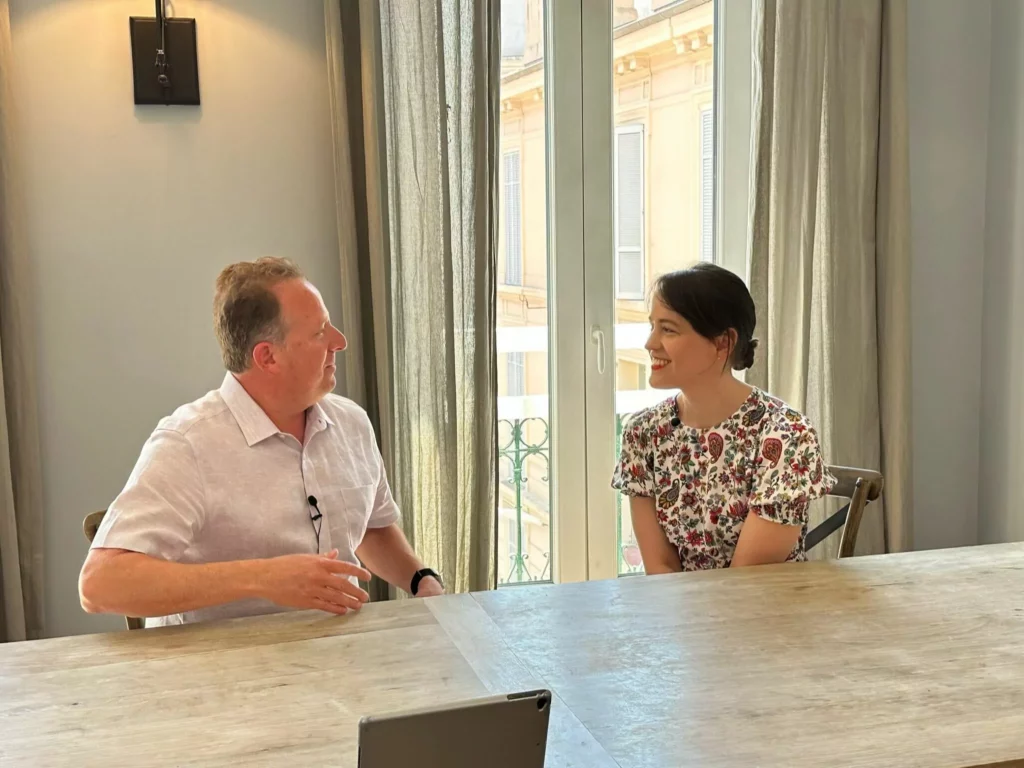Cannes Interview with Chloe Hawking: Tying Creativity and Brand Suitability for Clients
KINESSO UK&I CEO Chloe Hawking discusses brand suitability with Brand Safety Summit’s Rob Rasko, highlighting agency practices for their clients.
Authored by Emma Jeffers | 3rd July 2023The Cannes Lions International Festival of Creativity is the world’s biggest event for all things advertising. From celebrating the best of the best in the Grand Prix Awards, to thought-provoking discussions about new and emerging trends with key industry figures, Cannes brings together a diverse mix of international brands, world-leading media and creative agencies and tech companies.
KINESSO UK and Ireland CEO, Chloe Hawking, was interviewed by Brand Safety Summit’s President, Rob Rasko, to discuss brand suitability, and against the Cannes backdrop of creativity, how the agency ensures both for its roster of clients.
Click on the video to watch the interview or you can read it in full below.
Rob: One of the key topics in 2023 is how we think about the relationship of brand safety and brand suitability and how we still hit key client goals. How do you think of brand suitability in a way that ensures what clients care about, and still drives campaign results?
Chloe: When we think about the results we’re trying to achieve, obviously there is the media efficiency angle – which is often a big focus – and the impact of your campaigns, but increasingly clients have other goals which they’re being held accountable internally for as well, for example on the sustainability front or the DEI front.
I do think that the goals that our clients – especially the most progressive ones – are setting out are much broader than just an efficiency and effectiveness metric. They are thinking about other factors for company success. So, when we think about brand suitability in the media and creative landscape, we are thinking more broadly than just those outcomes.
With that in mind, our approach is to look at the ecosystem in a broader sense. We look at brand suitability through the lens of media responsibility and in that case, we’re looking at inclusivity, the safety of the environment and the ethics and sustainability of the platform. Clients do increasingly have goals around those areas, so we’re incorporating those into our media planning tools and investment decision frameworks.
Now a quarter of our global clients are using our media responsibility index to make decisions around their media mix. We’re still factoring the value of those placements, but it is also helping them to achieve their broader goals in those areas as well.
Rob: What happens if a suitability requirement gets in the way of a KPI goal of a client?
Chloe: There are multiple factors that will come into consideration for the final outcome of a plan. What is important is that the factors are built into our planning tools so you can see the cost alongside the sustainability inclusivity and other factors. You then get to a decision where you can up weight or down weight certain partners to get to your ultimate goal.
We haven’t really run into the problem that there has been a significant conflict in reaching those goals because platforms are evolving as well to fit into this framework. That’s been a big part of our approach, to work in partnership with the different platforms and media owners so they understand what we’re judging accountability by so they can evolve their offering.
Rob: We’re in Cannes, so we can’t not talk about creativity. How do you tie in brand suitability with your creative when you’re talking to creative agencies or the brands’ creative teams?
Chloe: I think the creative side has led in this area. I think there’s probably been more progress made in representation in the creative industry side with Creative Equals and a number of initiatives like that – which we can actually learn from on the media side.
But understanding the audience, the context of where the ad’s going to be placed and ensuring that creative is aligned to that, is the basics, so that doesn’t change. It requires that ongoing partnership between the creative and media side.
The other thing I would add is that obviously when it comes to the sustainability side – which is a factor in brand suitability – is that it might change some of the formats or the weight of files, and all these technical factors that may impact the creative that can be developed. I think that’s going to require a lot more partnership to see how we reduce the footprints of the campaigns that we’re producing and the way that they are being served.
Rob: Do you think about this from a global perspective as well, such as Asia Pacific and North America too?
Chloe: Yes, I do. In the UK, 15 of our top 20 clients we work with are on an international basis, so it’s multi-market and that comes with other considerations when you have changing regulations that impact the suitability of certain environments.
But specifically, the Media Responsibility Index that we’ve driven was originally a global approach and it was limited to five partners and just focused on the social space. In the last three years we’ve evolved that. Now it’s over 200 partners across seven different channels. I think the great thing about that is you can apply learnings across different markets and partners.
So, for example, broadcast has often been a leader in terms of supporting brand suitable environments. We’re then using that information to speak to CTV partners, or online video partners, and work out how you can apply some of those learnings to those environments to ensure its maximising suitability for brands’ placements.
For more coverage from other Brand Safety interviews, head over to their website here.
